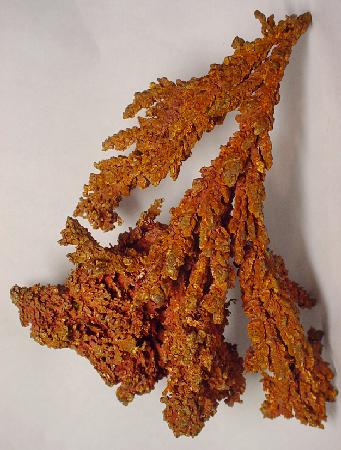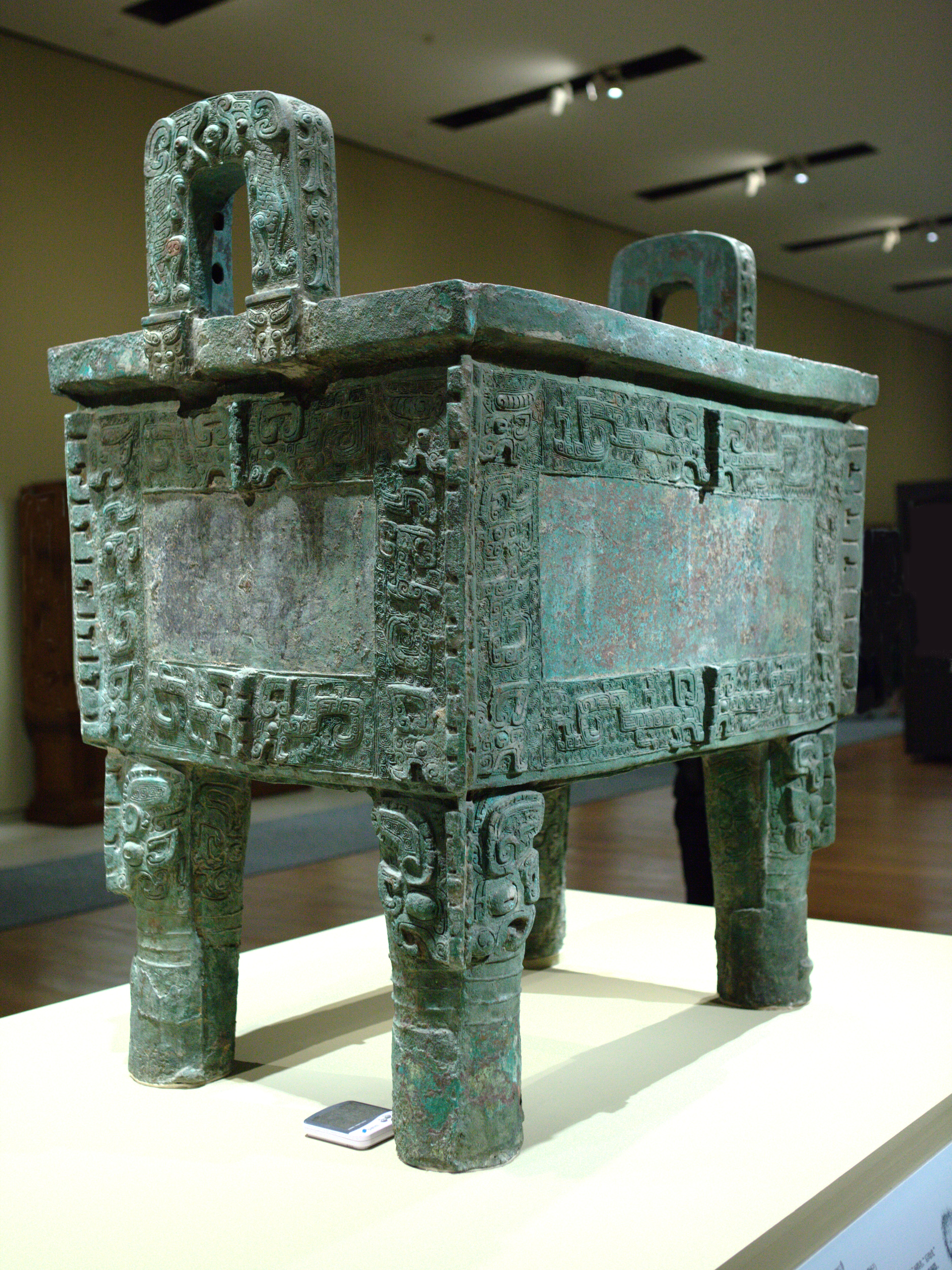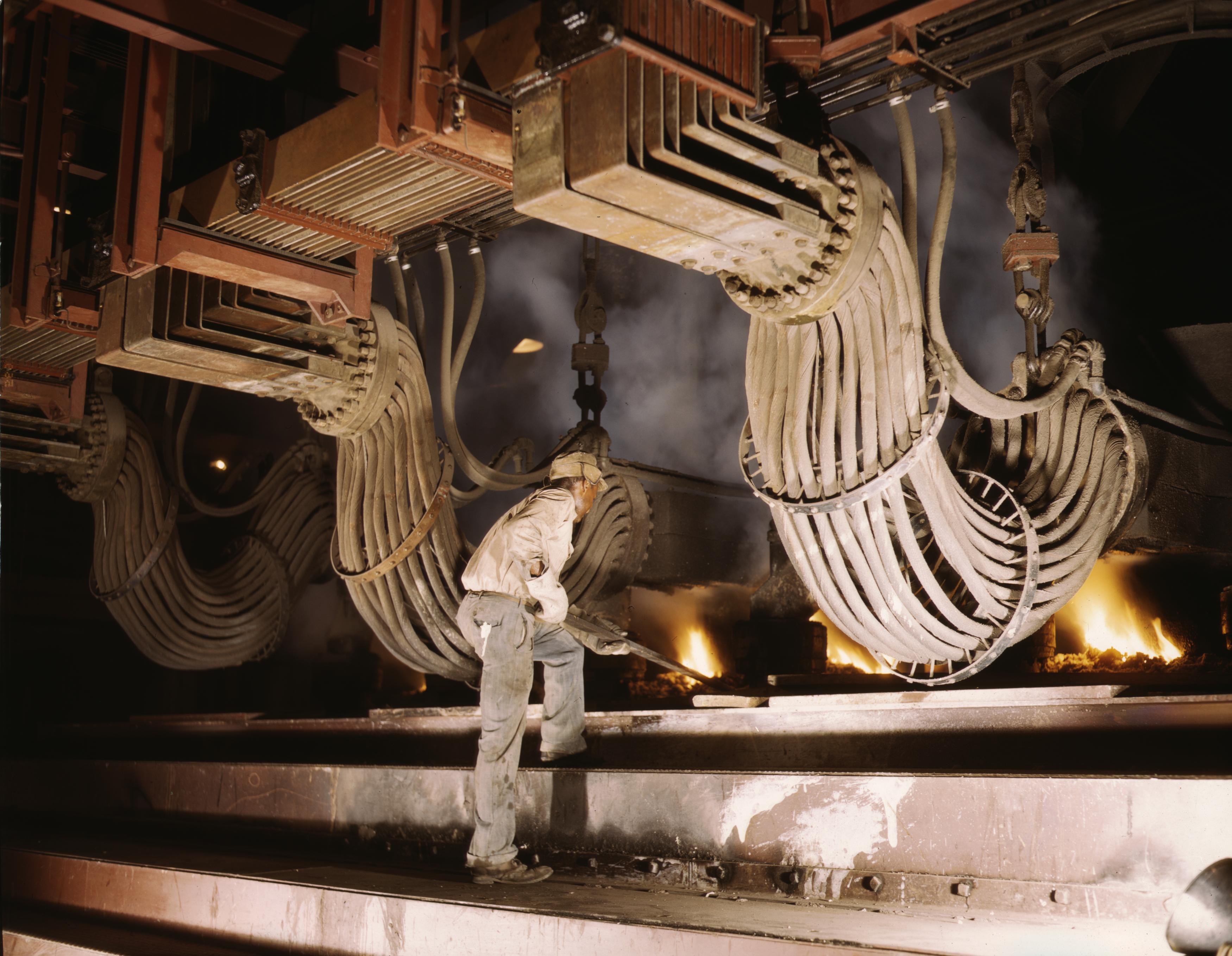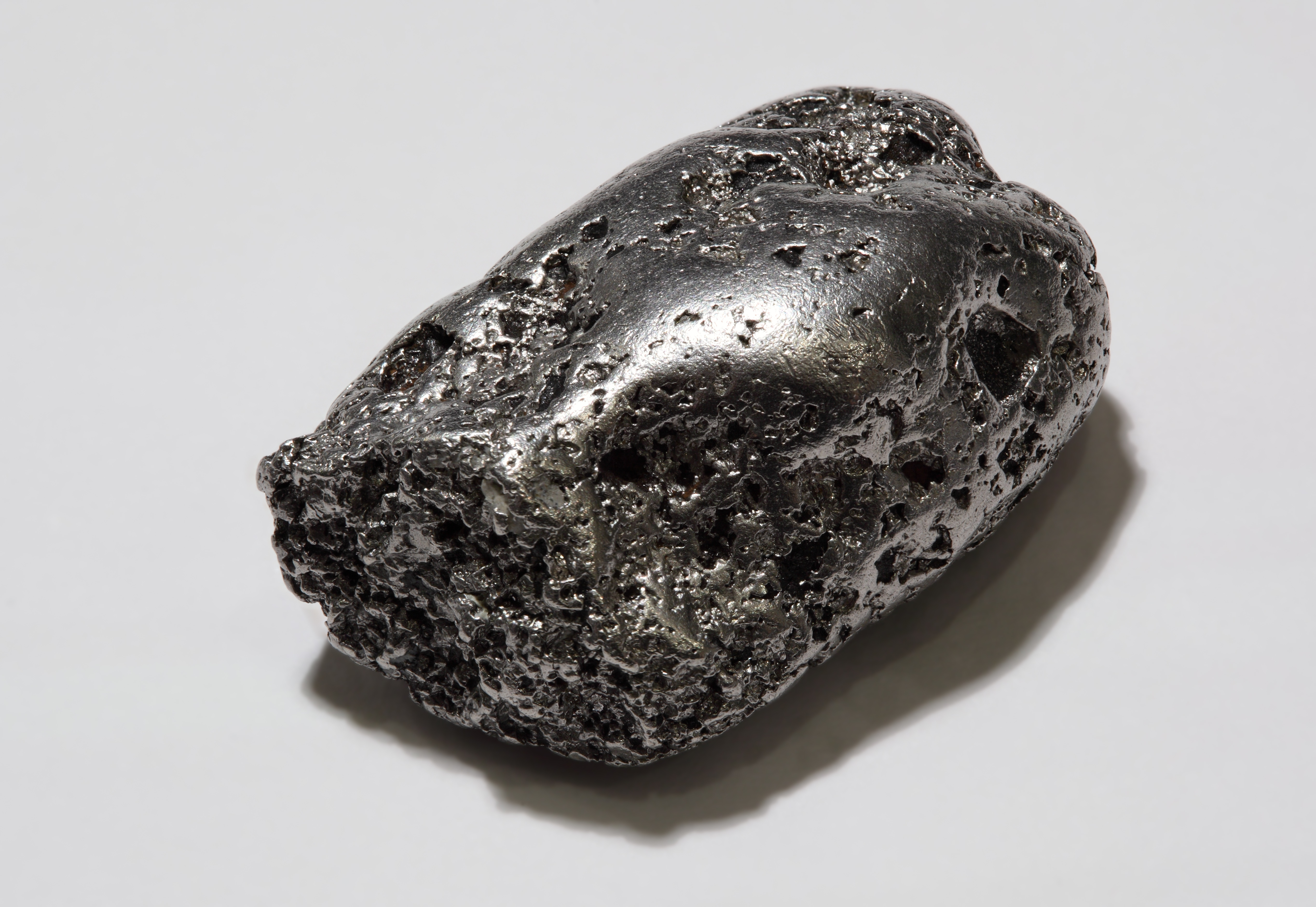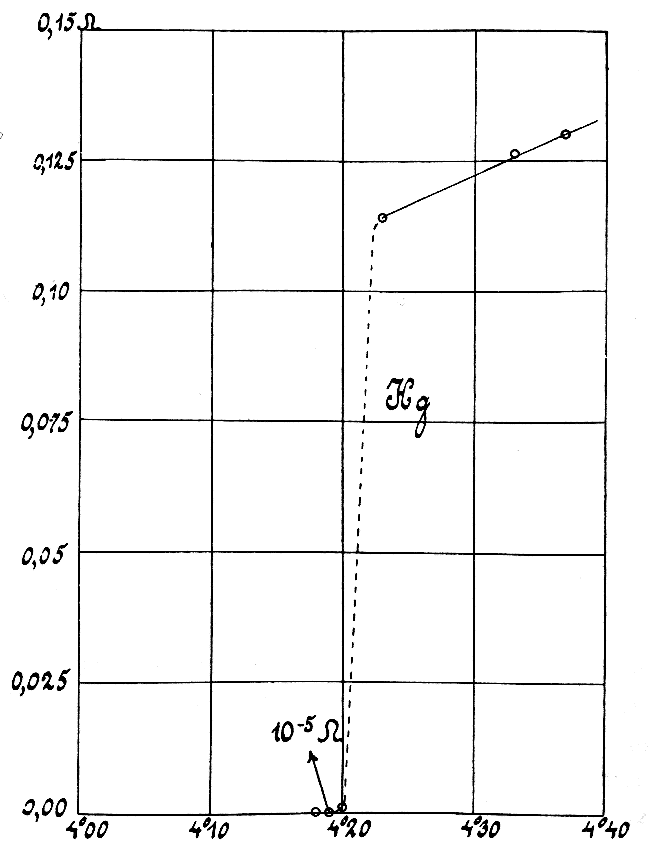|
Copper
Copper is a chemical element with the symbol Cu (from la, cuprum) and atomic number 29. It is a soft, malleable, and ductile metal with very high thermal and electrical conductivity. A freshly exposed surface of pure copper has a pinkish-orange color. Copper is used as a conductor of heat and electricity, as a building material, and as a constituent of various metal alloys, such as sterling silver used in jewelry, cupronickel used to make marine hardware and coins, and constantan used in strain gauges and thermocouples for temperature measurement. Copper is one of the few metals that can occur in nature in a directly usable metallic form (native metals). This led to very early human use in several regions, from circa 8000 BC. Thousands of years later, it was the first metal to be smelted from sulfide ores, circa 5000 BC; the first metal to be cast into a shape in a mold, c. 4000 BC; and the first metal to be purposely alloyed with another metal, tin, to create br ... [...More Info...] [...Related Items...] OR: [Wikipedia] [Google] [Baidu] |
Cupronickel
Cupronickel or copper-nickel (CuNi) is an alloy of copper that contains nickel and strengthening elements, such as iron and manganese. The copper content typically varies from 60 to 90 percent. ( Monel is a nickel-copper alloy that contains a minimum of 52 percent nickel.) Despite its high copper content, cupronickel is silver in colour. Cupronickel is highly resistant to corrosion by salt water, and is therefore used for piping, heat exchangers and condensers in seawater systems, as well as for marine hardware. It is sometimes used for the propellers, propeller shafts, and hulls of high-quality boats. Other uses include military equipment and chemical, petrochemical, and electrical industries. Another common 20th-century use of cupronickel was silver-coloured coins. For this use, the typical alloy has 3:1 copper to nickel ratio, with very small amounts of manganese. In the past, true silver coins were debased with cupronickel, such as coins of the pound sterling from 1947 onw ... [...More Info...] [...Related Items...] OR: [Wikipedia] [Google] [Baidu] |
Copper (color)
Copper is a reddish brown color that resembles the metal copper. The first recorded use of ''copper'' as a color name in English was in 1594. Variations of copper Pale copper At right is displayed pale tone of copper that is called ''copper'' in Crayola crayons. This color was formulated by Crayola in 1903. Copper red At right is displayed the color copper red. The first recorded use of ''copper red'' as a color name in English was in 1590. Copper penny At right is displayed the color copper penny. ''Copper penny'' is one of the colors in the special set of metallic Crayola crayons called Silver Swirls, the colors of which were formulated by Crayola in 1990. Copper rose At right is displayed the color copper rose. The first recorded use of ''copper rose'' as a color name in English was in 1928. Copper in nature ;Plants *The Copper-colored Restrepia is an orchid native to Colombia. ;Snakes *Copperhead snakes (such as '' Trigonocephalus contortrix'') ... [...More Info...] [...Related Items...] OR: [Wikipedia] [Google] [Baidu] |
Bronze
Bronze is an alloy consisting primarily of copper, commonly with about 12–12.5% tin and often with the addition of other metals (including aluminium, manganese, nickel, or zinc) and sometimes non-metals, such as phosphorus, or metalloids such as arsenic or silicon. These additions produce a range of alloys that may be harder than copper alone, or have other useful properties, such as strength, ductility, or machinability. The archaeological period in which bronze was the hardest metal in widespread use is known as the Bronze Age. The beginning of the Bronze Age in western Eurasia and India is conventionally dated to the mid-4th millennium BCE (~3500 BCE), and to the early 2nd millennium BCE in China; elsewhere it gradually spread across regions. The Bronze Age was followed by the Iron Age starting from about 1300 BCE and reaching most of Eurasia by about 500 BCE, although bronze continued to be much more widely used than it is in modern times. Because histori ... [...More Info...] [...Related Items...] OR: [Wikipedia] [Google] [Baidu] |
Smelting
Smelting is a process of applying heat to ore, to extract a base metal. It is a form of extractive metallurgy. It is used to extract many metals from their ores, including silver, iron, copper, and other base metals. Smelting uses heat and a chemical reducing agent to decompose the ore, driving off other elements as gases or slag and leaving the metal base behind. The reducing agent is commonly a fossil fuel source of carbon, such as coke—or, in earlier times, charcoal. The oxygen in the ore binds to carbon at high temperatures due to the lower potential energy of the bonds in carbon dioxide (). Smelting most prominently takes place in a blast furnace to produce pig iron, which is converted into steel. The carbon source acts as a chemical reactant to remove oxygen from the ore, yielding the purified metal element as a product. The carbon source is oxidized in two stages. First, the carbon (C) combusts with oxygen (O2) in the air to produce carbon monoxide (CO). Seco ... [...More Info...] [...Related Items...] OR: [Wikipedia] [Google] [Baidu] |
Malachite
Malachite is a copper carbonate hydroxide mineral, with the formula Cu2CO3(OH)2. This opaque, green-banded mineral crystallizes in the monoclinic crystal system, and most often forms botryoidal, fibrous, or stalagmitic masses, in fractures and deep, underground spaces, where the water table and hydrothermal fluids provide the means for chemical precipitation. Individual crystals are rare, but occur as slender to acicular prisms. Pseudomorphs after more tabular or blocky azurite crystals also occur. Etymology and history The stone's name derives (via la, molochītis, frm, melochite, and Middle English ''melochites'') from Greek Μολοχίτης λίθος ''molochites lithos'', "mallow-green stone", from μολόχη ''molochē'', variant of μαλάχη ''malāchē'', "mallow". The mineral was given this name due to its resemblance to the leaves of the mallow plant. Malachite was mined from deposits near the Isthmus of Suez and the Sinai as early as 4000 BCE. ... [...More Info...] [...Related Items...] OR: [Wikipedia] [Google] [Baidu] |
Verdigris
Verdigris is the common name for blue-green, copper-based pigments that form a patina on copper, bronze, and brass. The technical literature is ambiguous as to its chemical composition. Some sources refer to "neutral verdigris" as copper(II) acetate mono hydrate () and to "blue verdigris" as . Another source describes it as a basic copper carbonate (()2), and, when near the sea, basic copper chloride (Cu2(OH)3Cl). Still other sources describe verdigris as .(Cu(OH)2)n where n varies from 0 to 3. The alchemical symbol for verdigris is 🜨 (unicode U+1F728). Etymology The name ''verdigris'' comes from the Middle English ''vertegrez'', from the Old French ''verte grez'', meaning ''vert d'aigre'', "green ade by action ofvinegar". The modern French writing of this word is ''vert-de-gris'' ("green of grey"), sounding like the older name ''verdet gris'' ("grey greenish"), itself a deformation of ''verte grez''. It was used as a pigment in paintings and other art objects (as gre ... [...More Info...] [...Related Items...] OR: [Wikipedia] [Google] [Baidu] |
Patina
Patina ( or ) is a thin layer that variously forms on the surface of copper, brass, bronze and similar metals and metal alloys ( tarnish produced by oxidation or other chemical processes) or certain stones and wooden furniture (sheen produced by age, wear, and polishing), or any similar acquired change of a surface through age and exposure. Additionally, the term is used to describe the aging of high-quality leather. The patinas on leather goods are unique to the type of leather, frequency of use, and exposure. Patinas can provide a protective covering to materials that would otherwise be damaged by corrosion or weathering. They may also be aesthetically appealing. Usage On metal, patina is a coating of various chemical compounds such as oxides, carbonates, sulfides, or sulfates formed on the surface during exposure to atmospheric elements (oxygen, rain, acid rain, carbon dioxide, sulfur-bearing compounds). In common parlance, weathering rust on steel is often mistakenly ... [...More Info...] [...Related Items...] OR: [Wikipedia] [Google] [Baidu] |
Native Metal
A native metal is any metal that is found pure in its metallic form in nature. Metals that can be found as native deposits singly or in alloys include aluminium, antimony, arsenic, bismuth, cadmium, chromium, cobalt, indium, iron, manganese, molybdenum, nickel, niobium, rhenium, selenium, tantalum, tellurium, tin, titanium, tungsten, vanadium, and zinc, as well as the gold group (gold, copper, lead, aluminium, mercury, silver) and the platinum group (platinum, iridium, osmium, palladium, rhodium, ruthenium). Among the alloys found in native state have been brass, bronze, pewter, German silver, osmiridium, electrum, white gold, silver-mercury amalgam, and gold-mercury amalgam. Only gold, silver, copper and the platinum group occur native in large amounts. Over geological time scales, very few metals can resist natural weathering processes like oxidation, so mainly the less reactive metals such as gold and platinum are found as native metals. The others usual ... [...More Info...] [...Related Items...] OR: [Wikipedia] [Google] [Baidu] |
Constantan
Constantan is a proprietary name for a copper–nickel alloy also known as Eureka, Advance, and Ferry. It usually consists of 55% copper and 45% nickel. Its main feature is the low thermal variation of its resistivity, which is constant over a wide range of temperatures. Other alloys with similarly low temperature coefficients are known, such as manganin (Cu 6%/ Mn 2%/ Ni %). History In 1887, Edward Weston discovered that metals can have a negative temperature coefficient of resistance, inventing what he called his "Alloy No. 2." It was produced in Germany where it was renamed "Konstantan". Constantan alloy Of all modern strain gauge alloys, constantan is the oldest, and still the most widely used. This situation reflects the fact that constantan has the best overall combination of properties needed for many strain gauge applications. This alloy has, for example, an adequately high strain sensitivity, or gauge factor, which is relatively insensitive to strain lev ... [...More Info...] [...Related Items...] OR: [Wikipedia] [Google] [Baidu] |
Electrical Conductivity
Electrical resistivity (also called specific electrical resistance or volume resistivity) is a fundamental property of a material that measures how strongly it resists electric current. A low resistivity indicates a material that readily allows electric current. Resistivity is commonly represented by the Greek letter (rho). The SI unit of electrical resistivity is the ohm- meter (Ω⋅m). For example, if a solid cube of material has sheet contacts on two opposite faces, and the resistance between these contacts is , then the resistivity of the material is . Electrical conductivity or specific conductance is the reciprocal of electrical resistivity. It represents a material's ability to conduct electric current. It is commonly signified by the Greek letter (sigma), but (kappa) (especially in electrical engineering) and ( gamma) are sometimes used. The SI unit of electrical conductivity is siemens per metre (S/m). Resistivity and conductivity are int ... [...More Info...] [...Related Items...] OR: [Wikipedia] [Google] [Baidu] |
Building Material
Building material is material used for construction. Many naturally occurring substances, such as clay, rocks, sand, wood, and even twigs and leaves, have been used to construct buildings. Apart from naturally occurring materials, many man-made products are in use, some more and some less synthetic. The manufacturing of building materials is an established industry in many countries and the use of these materials is typically segmented into specific specialty trades, such as carpentry, insulation, plumbing, and roofing work. They provide the make-up of habitats and structures including homes. The total cost of building materials In history, there are trends in building materials from being natural to becoming more man-made and composite; biodegradable to imperishable; indigenous (local) to being transported globally; repairable to disposable; chosen for increased levels of fire-safety, and improved seismic resistance. These trends tend to increase the ''initial'' and ' ... [...More Info...] [...Related Items...] OR: [Wikipedia] [Google] [Baidu] |
Azurite
Azurite is a soft, deep-blue copper mineral produced by weathering of copper ore deposits. During the early 19th century, it was also known as chessylite, after the type locality at Chessy-les-Mines near Lyon, France. The mineral, a basic carbonate with the chemical formula Cu3(CO3)2(OH)2, has been known since ancient times, and was mentioned in Pliny the Elder's '' Natural History'' under the Greek name (κυανός: "deep blue," root of English ''cyan'') and the Latin name ''caeruleum''. Since antiquity, azurite's exceptionally deep and clear blue has been associated with low-humidity desert and winter skies. The modern English name of the mineral reflects this association, since both ''azurite'' and ''azure'' are derived via Arabic from the Persian (لاژورد), an area known for its deposits of another deep-blue stone, lapis lazuli ("stone of azure"). Mineralogy Azurite has the formula Cu3(CO3)2(OH)2, with the copper(II) cations linked to two different anions, ca ... [...More Info...] [...Related Items...] OR: [Wikipedia] [Google] [Baidu] |

